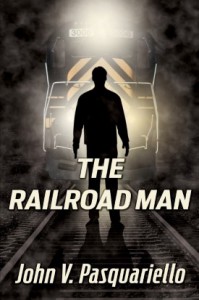Well, after pulling several teeth, I finally have some good news for those early customers who bought my novel for their Kindle devices. It also applies to those who downloaded the novel for free during the promotional period I had when I first debuted the novel. You can now update the content of the novel to the latest version by accessing it through your Manage Your Kindle page on Amazon.com. I have been assured by the Amazon people that this will allow anyone who has purchased a copy of my novel before today, February 19, 2015, will be able to update their copy of The Railroad Man to the latest (And I might add, the absolute best) version of the novel. I hope many of you out there will do so and reread a great story made even better. Thanks! Until next time.
Okay, I figured the “new Midland” would be a little hard to envision. So, I’ve added this map. The Midland is marked in red, but don’t confuse it with the state borderlines:
It may not be the best map but it was the only one I could find that I could mark the route of the new Midland Railroad on. You’ll see a line trailing off the westernmost end of the line that appears to end in the middle of nowhere. That is the Groundhog to Punxsutawney. For some reason, this map just didn’t show that town on it, so I approximated it’s whereabouts on the map. This map would be a close approximation to the one I refer to in Chapter 3 of my novel where Mike is show Laura where the line runs. That is one scene that really blew out, page wise. But there is a fair amount of interaction here between Mike and Laura, and some of it is humorous, so I believe the new, longer scene here will work well. Hope this helps you see what I did and why. If you look at the map, you will see just how small the older Midland would be, ending in Scranton. It simply could not be a commercially viable railroad, at least not an “old line” road that is not the result of a larger road splitting off a section of itself to create a modern short line or regional railroad. Until next time.
Okay, It’s been quite some time since I last posted here. That’s because I’ve been busy. And while i know that The Railroad Man has been getting great reviews and capturing fans literally all across the globe, I have always had something that was bothering me about it in the back of my mind. It was not something major. In fact, it’s quite anal, and would only be of interest to the most hard-core rail buffs out there. But I never really liked where my railroad in the novel ran to. Being as intimately familiar with the railroad industry as I am, I knew that a railroad that ended in Scranton could not be a commercially plausible enterprise. This was made apparent by the Central Railroad Company of New Jersey, whose main line ran between Jersey City and Scranton. It was a railroad not unlike the Midland who’s main purpose was the transport of anthracite coal to the New York harbor. When the coal business went under in the ’30’s, so did the CNJ. It hung around like a zombie for the next 40 years before it was swept into the dustpan of the government and their “solution” for the bankruptcies that plagued northeastern railroading in the 1970’s: ConRail (Read, Penn Central plus a few extra branch lines!)
I came up with a scenario that would have justified the Midland’s continued existence and its ability to thrive while competing against railroads much larger that itself. The were predicated on the thought that there was a railroad that ran between Scranton and Buffalo, that bridged the gap between the Midland, and a railroad that ran to Chicago and the big western carriers that ran to the West Coast. Like the Midland, which was a direct clone of the Susquehanna Railroad, this second railroad was a thinly veiled Delaware and Hudson, an old-line railroad whose corporate roots dated back to the 1820’s! The D&H is never mentioned by name (As are none of any other railroads that are mentioned beyond the Midland for fear of getting jammed by licensing fees and requirements today’s railroads now require to use their images in or on anything). In the story, I refer the the D&H as “The line that runs from Scranton to Buffalo.” That’s a mouthful, but what can i do. I state that the D&H is in danger of being taken over by “One of the Midland’s mega-competitors.” This is in reference to the Norfolk Southern, one of the mega-railroads in the U.S. today. In the story, it is a fear that the D&H was going to be taken over by the NS. But that was speculation when I first wrote that. I figured such an event would not happen, at least no time too soon. Well, on November 17, 2014, which also happens to be my birthday, it DID happen! And while the take over is undergoing regulatory review, it’s usually just a rubber stamp. The D&H lines through Scranton will soon become NS’s. And in my novel, that would spell complete economic disaster for the fictional Midland Railroad. It would be cut off, and lose all its traffic as a result.
I could not let this be. It bothered me, irked me, made me question the commercial plausibility of the Midland. I knew that the line would have to get to Buffalo by some other method to connect to that critical railroad to Chicago. But how? I worked out several methods in my head. None seemed to work, or were just too unwieldy to explain. How was I going to make the railroad in my novel get to Buffalo in a believable way? And then I remembered, I did already!
A long time ago, before the novel was even thought of, I designed a model railroad that combined the NYSW with other railroads to reach Buffalo, and thus make the line more “interesting’ and economically viable. This was an exercise in alternate reality, a “what if’ scenario that never came to be, but the railroad I chose to combine the Susquehanna with shared a common name with it. I wanted to use this line in my story, but felt, due to expediency, that the shorter, simpler Midland ending in Scranton would be better suited to a person writing his first novel who was trying to build up an audience. It was a compromise I never liked, but was willing to live with. Until NS bought out the damned D&H!
Allow me here to introduce you to the Buffalo and Susquehanna. If you’ve never heard of it, that’s okay. It was abandoned in parts, the first of which went in 1915! That’s 100 years ago! But if you HAVE heard of this line, then good. You certainly are a hard-core fan. The B&S was a near-do-well line that never lived up to its promises, mostly because its backers, two brothers from Buffalo, died before it could be finished. as a result, the line, which had built from Buffalo southward, was never completed, and began to be dismantled early. In fact, its line between Buffalo and Wellsville in western New York State has been gone 100 years now! Truly, this line is the very definition of obscure. But what if they were taken over by an aggressive company that was building west from Scranton and was looking to expand wes to the Great Lakes like other coal-based railroads of the time were doing. And just when the B&S was going to throw in the towel, it gets bought up by this company, who then invests in it, makes the needed adjustments to its route structure and integrates it as their new Main Line from Jersey City to Buffalo? Look at this map:
This WAS the B&S. I replaced the Buffalo line in the upper left corner in black which had been abandoned by the time this particular map was printed. The red lines between Hickox and Austin are the proposed lines that had to be built to rearrange the route structure to make the line to Buffalo viable, which included a long tunnel through Mina Hill, shown on the map as a dotted red line. Like I said, it was proposed to do this, but it never was built. The red line east of Sinnemahoning is track constructed west by my expanded and more aggressive Midland to meet the B&S from North Newberry, a yard built just to the north of the major junction point of Newberry Junction, hence the name. With this, the Midland now stretches from the Hudson to the Great Lakes, has a very important secondary line that runs west to Punxsutawney (In the novel, this line is called “The Groundhog”), and becomes a much more formidable and economically viable if completely fictional railroad.
These changes led to several others on the novel, notably the identification and rebuilding of weak scenes, bad paragraphs and awkward sentence structures. I also made a few changes to the outfit Laura, the main female character in the novel, is wearing. It’s softer, a little less tailored than the outfit she had been wearing, more in line with her background as a graphic artist.
I’d like to think of this new 2015 Edition as my “Director’s Cut” It has better scenes, better sequencing and for the buffs out there, more railroad that the earlier version. It is now available through all 3 of my outlets. I am working with Kindle to have the updated version available as an update for those who purchased the novel already on Kindle. Smashwords seems to have this option available for those who bought the novel for their Nook, iphone and other reader devices. As for those who purchased a hard copy of the novel, I apologize. There is nothing I can do for you except ask you to buy a new copy of the 2015 edition. I believe very strongly in this version of my story. I think those of you who choose to buy it to reread will think the same way.
With this reconstructed edition of The Railroad Man, I am also making my formal farewell to the novel. I will not be revisiting it to make any further changes. It is done, and I am dome with it. I have very many things that have been sidelined for the past 5 years while I wrote, rewrote and rewrote this novel. It’s time I returned my attention to them. I will continue this blog over time, and be available to answer any and all questions you might have regarding the novel. And the novel will continue to be available. So until next time…
If you’ve read the novel, you have been exposed to these terms. These are the principle locomotive types that play important and in one case, a dominant role in the story. They hold the same status as characters in the story. But many of you have no idea just what these things look like, or have any idea on how to visualize them in your mind. Well, here’s a quick primer.
PARTIAL PLOT SPOILER AHEAD! When the scene about the disabled train that has to get moved out of the way unfolds, I identify the lead unit as an EMD SD 45. This was a large, very attractive locomotive designed in 1966 by the Electro-Motive Division of General Motors (EMD). With 3600 horsepower, it was the most powerful commercially available locomotive made at the time. What set it apart from its more common, lower horsepowered SD 40 was its flared radiator section at the rear. SD was a designation by EMD that meant the unit was designated for “Special Duty,” meaning it was a road locomotive with six powered axles that could both lug heavy loads and power higher speed through freight trains with equal reliability, but not really suitable for switching. The 45 was simply a model number and had no bearing on its horsepower. It looked like this example from the NYSW Railroad:
The locomotive that comes to the rescue of the train is a GP 18. Again built by Electro-Motive Division, this smaller locomotive was first built in 1960 and was designed for “General Purpose” switching and road freight work. It only had four powered axles and could do almost any job a railroad could throw at it, hence the term, General Purpose (GP) The unit only produced 1800 horsepower, so EMD used that to give the model its designation as a GP 18. It had a very nice design to it, too, with a sloped front nose, round cab roof and a very wide front windshield. Again, here’s an example from the NYSW of their locomotive number 1802:
And here’s its control stand where a lot of action takes place at in the story:
The third locomotive in the story is the “Rock Star,” the locomotive that plays perhaps as important a role in the novel as any main character. It is the locomotive that so much of the action centers around and takes place on right to the climactic scenes of the novel. It is the ALCO C-430. ALCO is the acronym for the American Locomotive Company, a very old line company that can trace its beginnings to the very dawn of railroading in this country. In 1901, a number of smaller early locomotive companies consolidated into the modern American Locomotive Company and produced steam locomotives from then until just after World War 2. Starting at the turn of the 20th Century, ALCO, as it became known, began dabbling in diesel locomotives, producing a number of pioneering “Boxcab” designs that literally looked like a big box with windows on either end for the engineer to see where he was going. Over time, ALCO developed better and better locomotives and even pioneered the design of what is known as the “Roadswitcher” type locomotive. These are the type you see today on railroads all over North America: a narrow front and rear hood with a cab that extends to the edge of the frame with a handrail-bounded running board on each side of the narrow hoods. Just look at the two examples I showed you above and you’ll see what I’m talking about.
Over the years, ALCO simply could not keep pace with EMD. They were a small company fighting what was at the time the largest corporation on earth. And unlike the movies, in this case, the little guy had no chance. In 1969, ALCO exited the locomotive business. Their Canadian subsidiary, Montreal Locomotive Works, continued producing ALCO designed locomotives in Canada until the early 1980’s, by then becoming a subsidiary of Bombardier Corporation.
In the mid-1960’s, in their last ditch effort to compete with EMD, ALCO began building their “Century” series of locomotives. Thus from that time on, their locomotives all carried the “C” before their model number. They produced both four and six powered axled locomotives of varying horsepower, ranging from 1500 to 3600. The apex for their four axle Century types was the C-430 (four axles, three thousand horsepower). It was a very attractively designed locomotive that was supposed to do almost anything a railroad could dish up, from switching yards, to drilling cars in and out of industrial spurs to racing across country at the head end of a high speed manifest or intermodal freight train. Unfortunately, it never caught on. Only 16 were ever built, and today just 5 remain, of which only 3 are in daily service, one stored awaiting repairs, and one stuffed and mounted in a museum. Here is what the locomotive in my novel looks like, right down to its near-correct paint scheme:
And here is its control stand, again the center of much of the action in the latter parts of the story:
Number 430 on the Western New York And Pennsylvania Railroad IS the 3006. Just use your imagination and renumber the unit and re-letter it for the Midland. Better yet, here’s a rendition I did a few months ago:
The thing about Number 430 is that it was the NYSW’s Number 3000 until it was sold to the WNY&P. It’s sister locomotive, the 3006, is the unit that is currently awaiting repairs on the WNY&P. Now look at the other two examples and you’ll also see they came from the NYSW railroad. Do you see a pattern developing here? Good, because that’s what my next blog is going to be about.
Now you know what these “Characters” look like. I only hope that one day, I can show you what Laura, Mike, Todd, Carlos and Rosario, the five principle characters in my novel, will look like. Then again, one never knows, do one?
Thanks to contributors on the internet and on rrpicturesarchive.net for their photos.
Well, if you read my last post, you’ll know about the issues I uncovered while reading through my proof copy of the paperback version of my novel. For some reason, even though I thoroughly scrutinized my novel before I put it up on Kindle, a whole myriad of defects and mistakes made it through to the version I uploaded to Kindle. However, once I started to read my novel in on good old fashioned paper pages rather than a computer screen, the problems literally just blasted off those pages!
As such, I’ve spent the past week reading through my paperback proof very, very carefully. And as I went along, I made changes, and then uploaded the changed manuscript to Kindle. Then I hit Chapter 9, and found that I had so many problems in that chapter, it almost made me sick! How did they get through? I can’t answer that. Suffice to say, I was just plan embarrassed to have that version of the novel out there.
I stopped the running updates after that and redoubled my efforts to get my novel cleaned up once and for all. Last night, I finished that task. The defects became less and less the further along in the novel I got. By the time a reached the last chapter, the defects were almost non-existent. And now even those are long gone, replaced by better writing and sequencing.
At 5 AM today, my time (Eastern Standard), the final revamped, CLEAN version of my novel went back live on Kindle. However, between the release date on February 9 and then, 13 copies of the Kindle were sold. And while I thank everyone who bought my novel for their support, one of whom gave it a 4 star review despite the deficiencies I’ve just described, I felt it only fair to say to all of you how deeply sorry I am for selling you what I consider to be an inferior product. So to make this up, I am going to run a special limited time promotion on Kindle where I will offer my novel for free from Midnight on February 28 to 11:59 on March 1. This way, you can avail yourselves of a new, clean copy without having to fork over your money for a new one.
It should be noted that once I get the paperback version re-proofed and up on Create Space, it will already be cleaned and good to go. Until next time.
Another song title. Well unfortunately it rings true.
While reading through my proof copy of my paperback, I found a couple of typos. So I fixed them, and that led to me changing a few other things, mostly detailing with my main female character’s clothing. You have no idea how many times I’ve changed what this girl has been wearing over the years. Her shoes. Her skirt. Her blouse, or top, or jacket. Her hat. Some of them were simply because fashions changed. The way she was dressed in the original 1990 version would be far from what my wife would say is in vogue today. Then there are the myriad of other things that changed over the years. Scenes. Sequences of events. Reworking bad writing. Etc.
If anyone out there is a model railroader, you’ll understand my next point. When you build a model railroad, it is said it is never finished. There is always something that needs to be changed. A certain track arrangement. A part of scenery. Structures. Electronic control systems. Etc. I found the similarity between that and the writing of this novel to be uncanny. It seems the novel just is never finished, despite me saying it was. (See my earlier post, The Long And Winding Road.) There’s always some part that I find I could have written better.
I hope I did make my last changes, but I’m sure there will be others. As I go through my proof, who knows what I’ll find. So this begs the question: When is it enough? When do I finally call it quits? Right now, I can’t seem to find the brakes on this thing. Until then, to those of you who have bought my novel on Kindle Direct, keep it. You have a collector’s item. With the typos and the changes to Laura’s outfit in the story, you might have what amounts to being one of those misprinted postage stamps. Who knows what that might be worth some day? (Ha!)
This one is serious. What do these two numbers signify to me? Well it relates directly to February 9. You see, that date this year isn’t only the launch of my novel and fiftieth anniversary of the Beatles arriving in the US, but it’s also a very solemn day. 18 years ago on the rail lines I operate over, two engineers and a passenger died in a horrific head-on collision. I’m not going to go into the details, but the accident still lives on in the hearts and minds of every locomotive engineer I work with at my company
Look at these pictures:
These were taken several years apart. The first one is of me operating Locomotive 4148 through Great Notch Station in August of 1995, just a few short months after I started with NJ Transit. The later one is of me operating Locomotive 4219, taken by a friend of mine at the Waldwick, N.J. station while I was waiting at a red (Stop) signal. Aside form the fact that I’m a little older and heavier, but still just as ugly in the later photo, what do these two locomotives have in common? And what does it have to do with the wreck I told you about? Well everything. Because Locomotive 4148 and Locomotive 4219 are the SAME locomotive.
About six months after the earlier photo was taken, on February 9, 1996, Locomotive 4148 was involved in that terrible head-on collision. Two trains came together at the junction between our Main and Bergen County rail lines. They struck each other not quite dead center head on, but right side to right side, the side where the engineers sit. When all was said and done, 4148 looked like this:
The other train was operating cab car first, meaning it was being pushed by its locomotive and controlled by the engineer in a compartment in the end of the car. That car was peeled open like a sardine can. Miraculously, only 1 passenger died in the accident, but both engineers perished as well, one instantly, the other shortly after first responders (They weren’t even called that then) got to him. Many people were hurt, and rescue hampered by the relative inaccessibility of the area. There simply were no roads out there for ambulances and paramedics to get to the crash site. It was right in the middle of the Jersey Meadows.
Like I said, I am not going any further into the details of what exactly went wrong and how blame was assessed. That is not the point of this blog entry. What I want to say here is how fleeting life is, how quickly it can all be taken away, and how we are all in the end interconnected to each other. I never knew one of the engineers who was killed. I barely knew the other one, but every time I saw him, he had a smile and spoke nothing but kind words to me. He knew I was a nubie, and being not far removed from being a nubie himself, wanted to do anything he could to help me. I only wish I did get to know him like so many of my other co-workers did.
Today that accident can never happen again. The junction where it happened has been completely changed, the tracks re-arranged by the construction of a new transfer station at Secaucus. The accident site, once so inaccessible, now sits under the looping overpass of Exit 15 X off the NJ Turnpike, and a major multilane roadway runs on the roadbed of what used to be the approach tracks to the junction from the Bergen County Line. Even Great Notch Station is now history.
Locomotive 4148 was deemed repairable. And it was. But Transit management decided to renumber the unit 4219, maybe out of respect for the engineer who lost his life in it. I have run this locomotive dozens of times since it returned to service, but always to me it will be Locomotive 4148, and I say a little prayer every time I enter its cab for the man who died in the seat I am about to occupy to take charge of the train it is leading. So February 9 is not only a day for me to celebrate, it is also a day to remember two engineers and 1 passenger who left for work one day and didn’t make it back home that night. And as for Al and John, rest in peace.
So, here we are fifty years to the day that The Beatles were introduced to America on the Ed Sullivan Show and it seems appropriate for me to borrow the title from one of their last hits. On April 25, 1990, I struck the first key stroke for my novel, The Railroad Man, after conceptualizing and fleshing out its details for about five months before. On February 8, 2014, I struck my last key stroke. It was a simple correction of a typo, a missing article on page 28 of my manuscript (The word, THE). I uploaded my files to Kindle Direct and Create Space some time after 2 AM this morning.
Today, as of 7:57 this morning, my novel, The Railroad Man, went live and is now available on Kindle Direct. Here’s the link to it:
http://www.amazon.com/dp/B00IBUGZ9Q
If you’ve read my earlier posts, you’ll know it’s truly been a long and winding road to get here. I really don’t know how I feel. This story has been a part of me for 24 years, and after I uploaded the files, I felt a little strange, like I was watching one of my kids move out of the house for good. Anyway, for better or worse, my story is now finally out for the public to view. Maybe they’ll hate it. Hopefully they’ll love it.
I also uploaded to Create Space for the production of a traditional soft cover book. This is what they call POD – Print On Demand. Thanks to computers, the files are simply held at Amazon and when someone orders a copy of my novel in book form, the order goes down to the print shop and just like that, a copy of my novel is typeset, printed and shipped out, along with dozens, maybe hundreds of other titles that have also been ordered by other readers. Hopefully, they’ll be printing dozens and dozens of copies just of The Railroad Man! This is subject to their standard review process. The soft cover versions will not be available for a couple of days at least, so we’ll just have to wait for them to give me the green light and send me a proof. Now that will be exciting. As you may have figured out, I’m kind of old school. I won’t really feel like my novel has actually been published until I’ve got a copy of it in book form in my hands.
And so, here we go on the next, final leg of this long, long journey. It all comes down to promotion, and some luck. I hope to get some traction in both camps. Until then, if any of you do download and read my novel, and like it, which I believe you will, please let your friends and family know. Spread the word. Leave comments here. And like my Facebook page for the novel at The Railroad Man. Thanks to everyone who have stood by me along the long and winding road. And thanks to those of you who may be just joining me here on my continuing odyssey called life.
I recently watched one of my favorite television shows the other night called The Big Bang Theory. In it, several of the characters take a romantic Valentine’s Day train ride on the Napa Valley Wine Train. In the episode, they tried to infuse a little technical gobbledy-gook and referred to the locomotive as an ALCOA F4A. Wrong! ALCOA is the acronym for the Aluminum Company of America, and there is no such locomotive model as an F4A. Okay, this is a comedy, and technical accuracy is not expected here. But here in a small nutshell is a major pet peeve of mine in regards to the movie and television industry and railroads.
The very first motion picture to tell a full story was made in 1903. It was called The Great Train Robbery and was filmed not too far from where I am writing this blog post by Thomas Edison’s film company. From the very beginning of the motion picture industry, trains have played a major if not staring role. Unfortunately, that role is fret with technical inaccuracies and outright ignorance of operating practices. Why can’t they get it right?
It just seems that writers are simply not interested in getting the facts right when it comes to trains in their scripts. Maybe they are just too pressured to get a script out there in time and can’t do the research or consult with a railroad expert to get the facts straight. Or maybe they’re just too lazy or simply don’t care. In any case, it leads to some very laughable, sometimes tragic moments in film and television that makes them hard for me to watch.
Take Unstoppable for instance. Here was a film that had so much promise, it inspired me to finally get off my duff and write my novel. It was based on an actual incident that occurred a few years earlier. It stared two powerhouse actors in Denzel Washington and Chris Pine, and it was directed by Ridley Scott, one of the more prominent directors in the industry. Unfortunately, for whatever reason, the film was a complete miss on how railroads and railroaders operate. Why did they use such an unusual and up to that time unheard of commodity in the tank cars that were supposed to provide the suspense. “God forbid these cars should wreck, otherwise the Phenyl-bad-shit would take out the town!” Huh? I would have used a much more deadly cargo that everyone knows here: Chlorine. Okay, it might not make a sexy explosion, but a single tank carload of chlorine can take out up to 100,000 people if it ever was broken open in a wreck, depending of course on the direction of the prevailing winds. That is a fact, and it would put a real fear of God into an audience.
That of course leads me to the big bridge scene in the story. There is absolutely no possible way a train tearing around a curve at a high enough speed to tilt over and lift off one rail could make it around that curve. Trains are very top-heavy. They are about 10 feet wide and ride on a track whose rails are just 4 feet, 8 and a half inches apart. Just this alone makes a train similar to a gymnast balancing herself on a balance beam. Lean too much to one side or the other, and the gymnast falls off. Same for that train. Once it leans that far over to the outside of the curve, it will roll over! Game over! Sayonara! Now, if this were to happen with chlorine tank cars and the train falls into a tank farm with explosive petroleum products in it, now you’ve got something! And why was the entire town heading to that crash site to see if the train could indeed make it around that bend on the bridge? Where were the town officials and the police and why were they not directing citizens AWAY from the site? Even how the train runs away in the beginning was completely boogered. The actual event would have been more exciting and very easy to recreate on film. Why did the script change this?
I could go on and on about this one film. There are so many others. A recent episode of NCIS:LA had a hijacked train with chlorine (Hmm, where did I hear about that before?) run away because the train’s air brake line separated and the hijacker, an environmental activist, couldn’t stop because, “My brakes don’t work anymore!” WRONG AGAIN! Once a separation of the brake line occurs, the train’s brakes apply in an emergency brake application, no if’s ands or buts (Unless some other catastrophic event precludes the system from doing so, a very, very rare and extremely unlikely event.) The train would stop and the hijacker would not be able to move it at all until the air brake line was reconnected, the system reset and the air pressure in the system recharged.
In my novel, The Railroad Man, I took great pains to insure every aspect of the railroad in the story was technically accurate and properly presented. Yes, I did embellish a couple of parts for the sake of drama, but these are done in a believable fashion and are limited mostly to the size of my train in the story vis a vis the severity of the slack action it creates in the cab of the locomotive. What happens in my story is real and can happen. It just needs to happen with a much larger train.
That’s all for now. Except for one last thing. The Locomotive in The Big Bang Theory episode was a Montreal Locomotive Works FPA 4. Montreal was the Canadian subsidiary of the American Locomotive Company (ALCO) which continued to produce ALCO designed locomotives in Canada into the 1980’s, well after ALCO went out of business in the U.S. in 1969. For all intents and purposes, Montreal Locomotives were ALCO’s. Hence it would be acceptable to call the unit an ALCO FPA 4, or even better, an ALCO-designed FPA4. Now that wouldn’t have taken any more time to write in the script and have the actress recite in the show, would it have? Until next time.
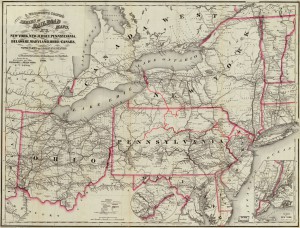
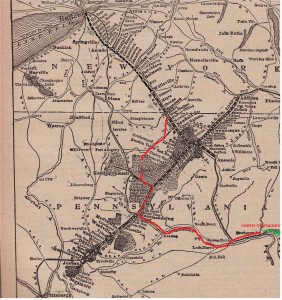
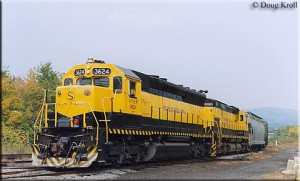
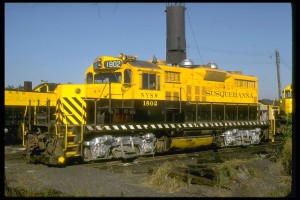
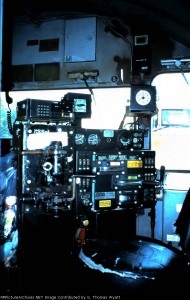
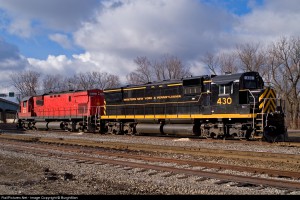
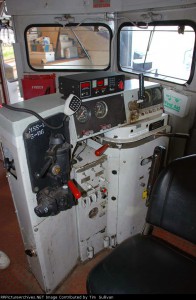

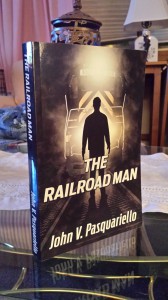
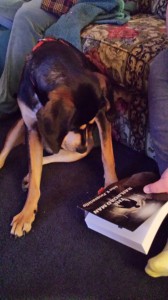
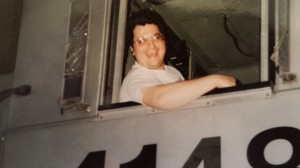
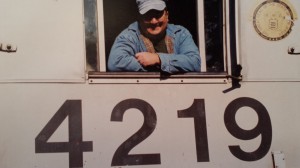
![Fire-13-95[1]](https://therailroadman.com/wordpress/wp-content/uploads/2014/02/Fire-13-951-300x215.jpg)
